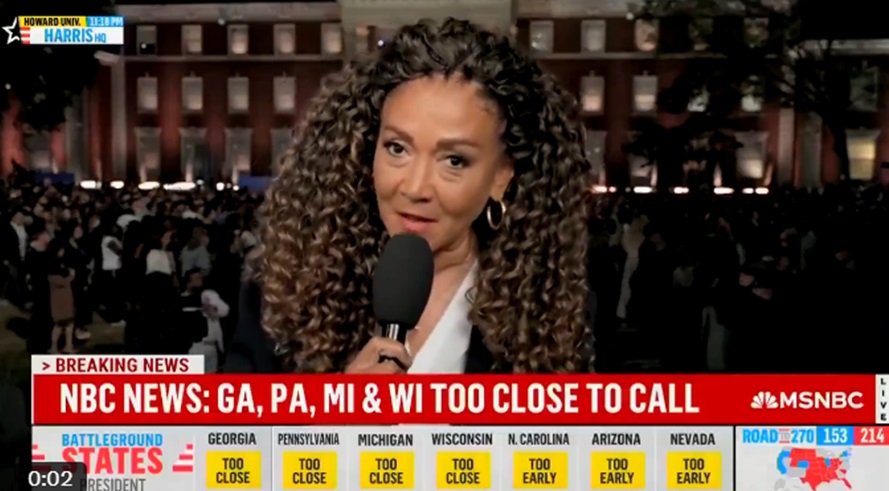In a recent report from MSNBC, journalist Michele Norris conveyed a sense of unease at Vice President Kamala Harris’s election rally, describing the audience’s mood as “nauseously optimistic.” This term, which she suggested was becoming more common in political discourse, reflects a complex emotional state during what is perceived to be a challenging election climate. Norris highlighted comments from Laphonza Butler, who expressed concerns about the electoral prospects in key battleground states such as North Carolina, emphasizing the increasing focus on the so-called “blue wall” composed of states like Wisconsin, Pennsylvania, and the urban district in Omaha, Nebraska. This geographical focus is critical since these areas are traditionally key supporters for Democratic candidates.
Norris articulated growing worries among Harris’s supporters, particularly as they grappled with the uncertainty surrounding pivotal states. She noted that there existed an optimistic belief that Donald Trump, the former President, had hit a ceiling of votes in prior elections. However, early signs indicate that he might be outperforming expectations, even eclipsing Joe Biden’s support in crucial regions. This shift could signal a challenging path for the Democratic campaign if it is unable to consolidate its base and leverage traditional strengths in these battleground areas.
Further compounding the challenges for the Harris campaign was the unexpected support Trump appeared to be gaining among Hispanic voters. Norris observed that despite his controversial remarks and the backlash they invited, his appeal in certain demographics, particularly in areas like Allentown and Hazleton, was notably rising. This trend underscores a significant demographic shift that could have far-reaching implications for election outcomes in states where Hispanic populations are growing and increasingly influential.
At the rally, the atmosphere was intentionally upbeat, with efforts made to infuse joy and energy into the proceedings. The inclusion of a DJ and line dancing was aimed at keeping spirits high amidst the palpable tension that many felt about the impending election results. Norris reported a collective awareness that a long, uncertain night lay ahead as supporters prepared for potential disappointments. This proactive strategy of injecting positivity into the rally speaks to the organizers’ hopes of rallying their base and maintaining momentum throughout a taxing electoral process.
The looming competition between Harris and Trump highlighted the unpredictable nature of the political landscape, particularly as it grew evident that Harris’s traditional support base was showing signs of fracturing. The “nauseously optimistic” feeling described by Norris may serve as a cautionary tale about the volatility of electoral prospects. With Trump’s gains in key demographic groups and the shifting dynamics in battleground states, the Harris campaign is confronted with an increasingly forbidding landscape as it seeks to reclaim its narrative and energize its supporters.
The clock is ticking as results start to emerge, and the impact of these changes becomes clearer. As both candidates navigate their respective strategies, the spotlight remains on the decisions made in the coming hours. Democrats are eager to see if their foundational support will hold strong under pressure, while Republicans, buoyed by unexpected demographic shifts, prepare to challenge the prevailing assumptions of the blue wall’s strength. As Norris captured in her reporting, this election is not only a measure of political allegiances but also a reflection of broader societal shifts that redefine the electoral battleground in real-time.

